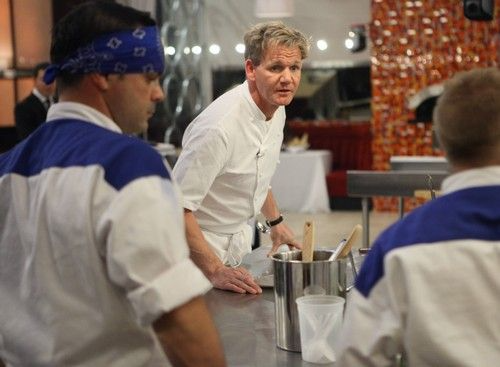
For decades, Gordon Ramsay has stood as the unshakable face of culinary dominance—shouting in kitchens, commanding empires, and starring in hit series across the globe. But what fans rarely realize is that behind the fire and fame, Ramsay once faced a hidden financial collapse so severe, it nearly ended everything he built.
At the height of his success in the mid-2000s, Ramsay appeared untouchable. “Hell’s Kitchen” was thriving, Michelin stars adorned his restaurants, and tabloids labeled him the “rockstar of food.” But cracks were forming—beneath the surface, his business empire was stretching too far, too fast. And the man who barked orders on-screen was quietly drowning in off-screen chaos.
The trigger? A string of high-stakes international ventures that spiraled out of control. In 2008, as the global recession hit hard, Ramsay had just expanded aggressively—opening restaurants in Los Angeles, New York, Paris, and even Dubai. On paper, it looked like global domination. In reality, it was a financial nightmare.
Behind closed doors, Ramsay was forced to inject nearly £10 million of his own money to keep his empire afloat. And if that wasn’t enough, he discovered something even worse—his father-in-law, Chris Hutcheson, who was also the CEO of Ramsay’s business, had been secretly siphoning money from the company.
It wasn’t just a betrayal—it was a war.
Ramsay responded swiftly, firing Hutcheson and suing him. But the drama didn’t end there. The court case revealed that Hutcheson had embezzled millions, and used secret accounts to fund a double life—including a secret second family Ramsay had never known about. It was a scandal that stunned both fans and financial analysts.
Suddenly, the Gordon Ramsay the public saw—the composed powerhouse on TV—was unraveling behind the scenes. “It felt like I’d been punched in the stomach,” Ramsay later admitted. “I didn’t just lose money. I lost trust.”
In 2010, Ramsay’s restaurant group posted a £4 million loss, and his creditors began circling. He sold off several restaurants. Closed others. And through it all, he kept smiling on TV, masking the fact that his empire was being rebuilt from the rubble.

But here’s where the story takes a twist.
Instead of collapsing, Ramsay doubled down. He restructured the company, brought in new financial leadership, and slowly clawed his way back—restaurant by restaurant, show by show. By 2020, Gordon Ramsay Holdings had bounced back with explosive growth, including a new global partnership that would see 100 restaurants open in the next decade.
Fans never knew how close they were to losing him.
Today, Ramsay is worth an estimated £650 million, but the scars of betrayal and bankruptcy never fully healed. That’s why he’s notoriously careful about who he trusts in business now. “Once you’ve been burned like that,” he said, “you never forget.”
And perhaps that’s why his shows are fiercer, his tone sharper, and his standards higher than ever. Ramsay isn’t just yelling for drama—he’s fighting to never return to the place he once fell from.
So next time you see him slam a plate or rip into a chef, remember: behind that fire is a man who nearly lost it all… and came back stronger.
